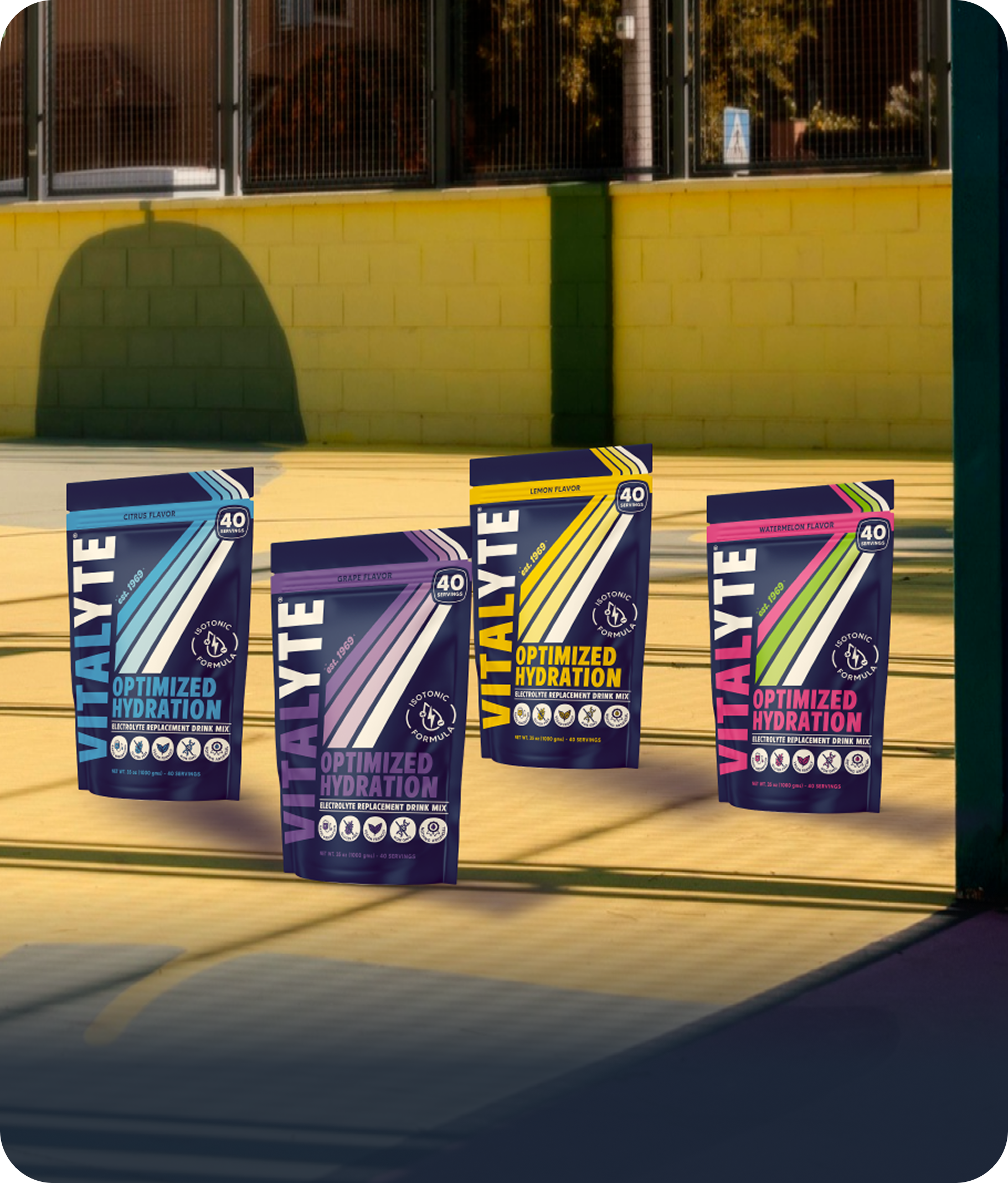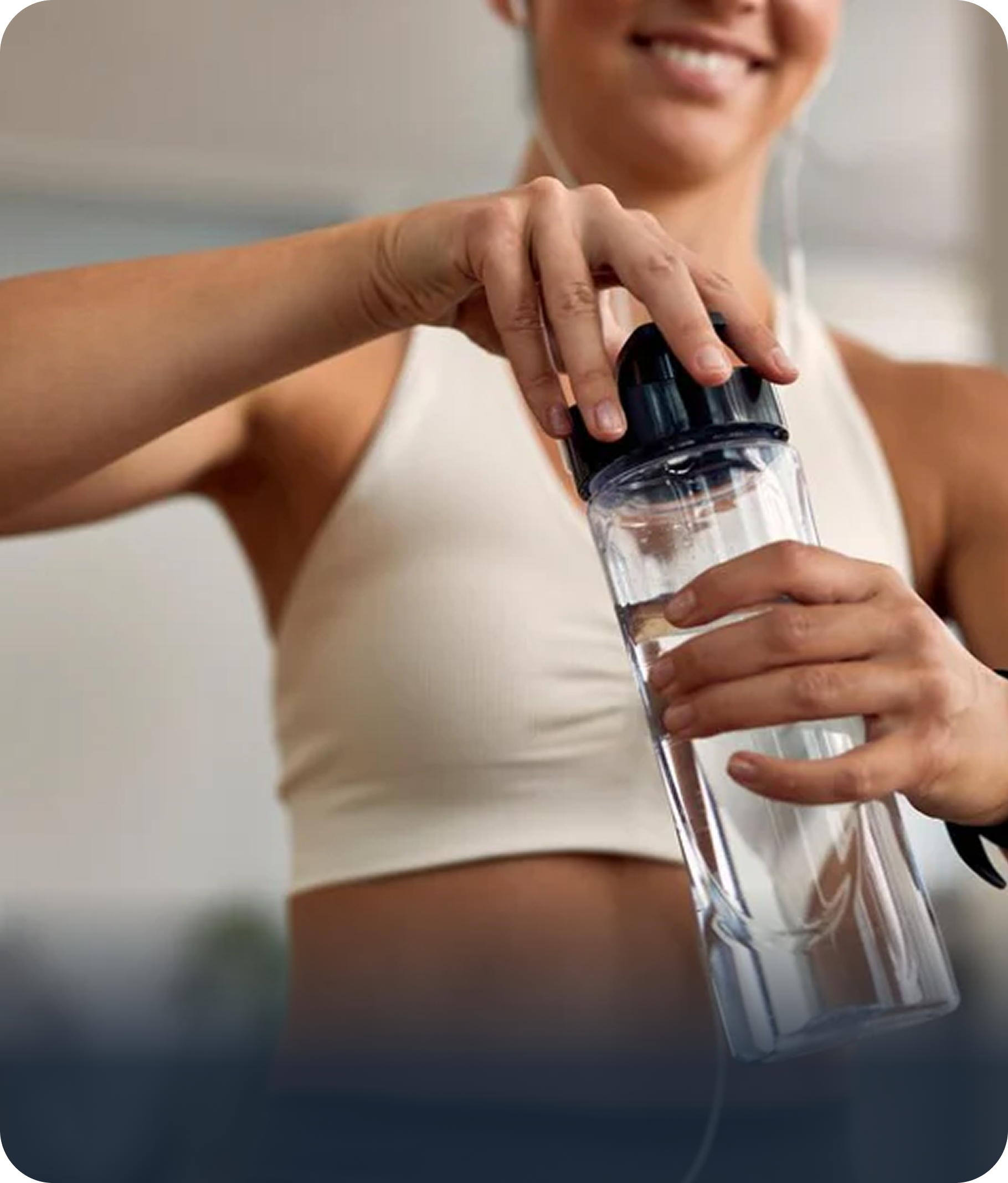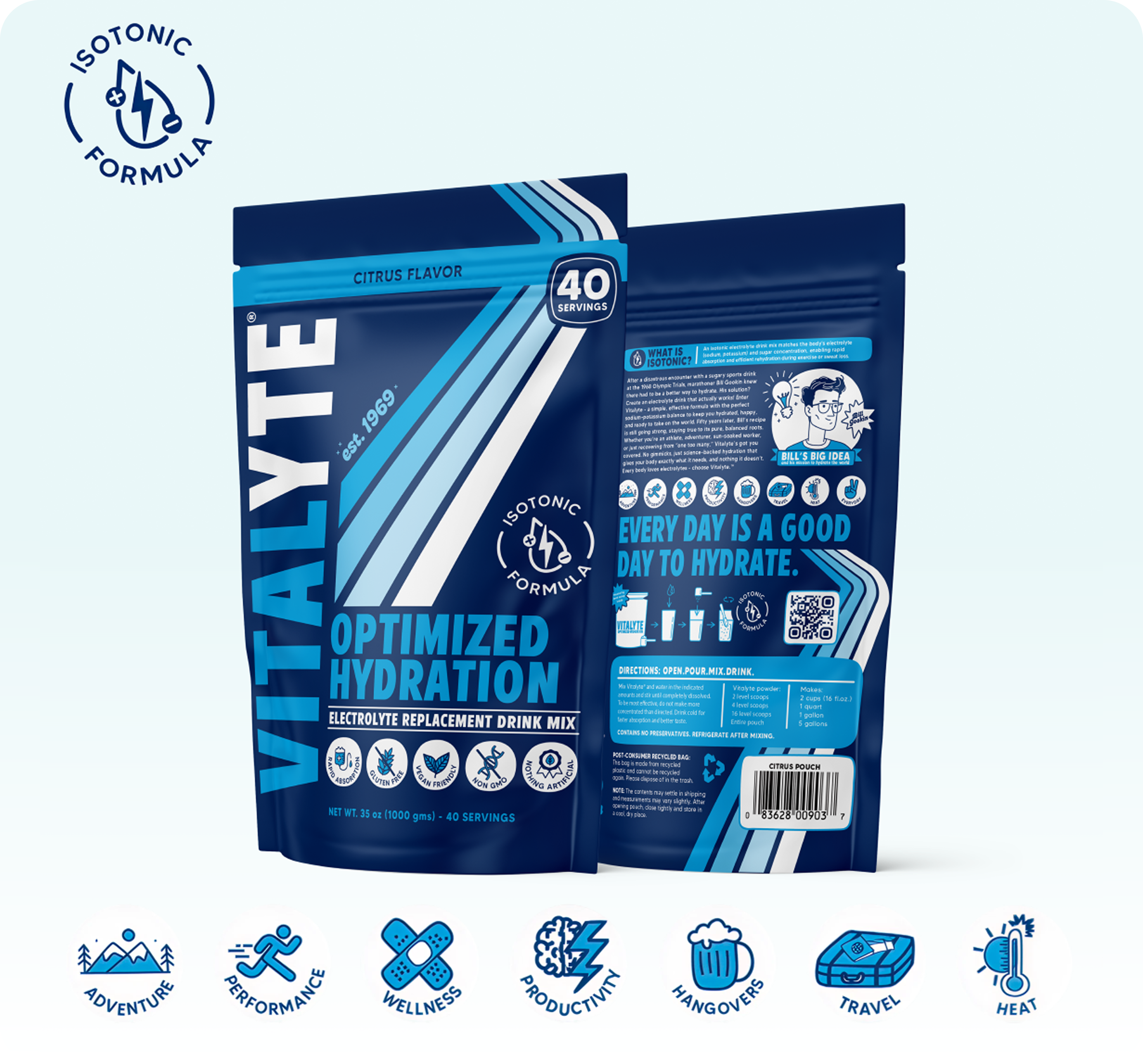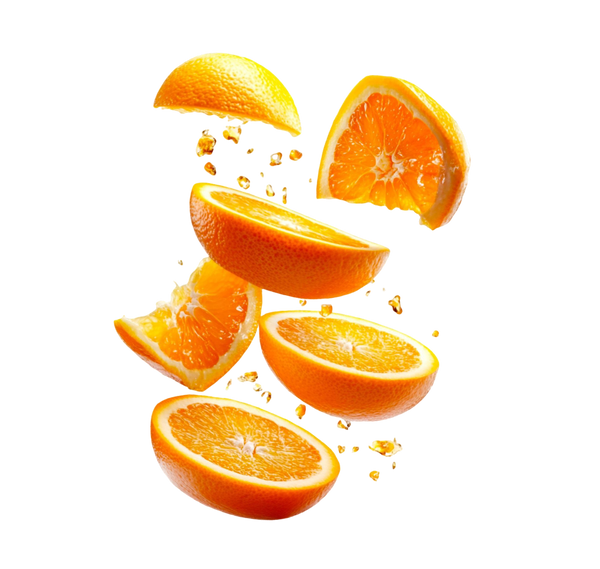Isotonic vs Hypertonic Electrolyte Drinks: Why Concentration Matters More Than You Think
Share

The sports drink that destroyed Bill Gookin's 1968 Olympic Trials Marathon wasn't poisoned. It wasn't expired. It wasn't contaminated.
It was just too sweet.
Mile 18 hit him like a wall. Stomach cramps doubled him over. Nausea made every step torture. His legs, which had carried him through months of perfect training, suddenly felt like concrete. He'd been drinking religiously at every aid station, following the conventional wisdom: stay hydrated, perform better.
Instead, he bonked spectacularly. His Olympic dreams died not from lack of fitness, but from a formulation mistake he didn't even know existed.
That mistake? The drink was hypertonic. Too concentrated. Too much sugar pulling water from his bloodstream into his gut instead of the other way around.
Bill spent the next 25 years as a biochemist obsessively testing different concentrations on himself and thousands of athletes. What he discovered became the foundation for understanding why most electrolyte drinks fail when you need them most, and why that number on the label (osmolality) matters more than sodium content, flavor, or celebrity endorsements.
After five decades of real world use, the lesson is crystal clear: isotonic concentration around 280 to 300 mOsm/L cannot be improved upon. It's not marketing. It's physiology.
This guide explains why concentration matters, how to identify problematic drinks, and when the "rules" actually change.
 What Osmolality Actually Means (And Why You Should Care)
What Osmolality Actually Means (And Why You Should Care)
Osmolality measures the concentration of dissolved particles in a solution, expressed as milliosmoles per liter (mOsm/L). Think of it as how "thick" or "concentrated" a drink is at the molecular level.
Your blood sits at approximately 280 to 300 mOsm/L. This number isn't random. It's the concentration your body maintains to keep every cell functioning properly. When you drink something that matches this concentration, your body can absorb it immediately without having to dilute or concentrate it first.
Isotonic drinks (270 to 310 mOsm/L) match blood concentration. Water, electrolytes, and carbohydrates move directly from your intestines into your bloodstream through the fastest available pathways.
Hypertonic drinks (above 320 mOsm/L) are more concentrated than blood. Your body must pull water from circulation into your intestines to dilute them before absorption can occur. This is exactly what happened to Bill at mile 18 in 1968.
Hypotonic drinks (below 270 mOsm/L) are less concentrated than blood. They absorb slightly faster than isotonic but deliver fewer electrolytes and carbohydrates per ounce, limiting their usefulness for sustained activity.
Research published in Sports Medicine analyzing 28 studies and 68 drink treatments found that isotonic drinks maintained plasma volume better than hypertonic alternatives during continuous exercise. The difference wasn't small. It was the difference between finishing strong and hitting the wall.
Bill didn't know the term "osmolality" in 1968. The research explaining SGLT1 transporters and sodium-glucose cotransport hadn't been published yet. But his body taught him the hard way what scientists would later prove in labs: concentration matters more than almost anything else about your hydration strategy.
The Three Problems Hypertonic Drinks Create
When Bill went back to his biochemistry lab after that disastrous race, he started testing different concentrations systematically. After 15 years of experimentation, three consistent patterns emerged with hypertonic formulations.
Problem One: Delayed Gastric Emptying
Your stomach isn't just a holding tank. It's a sophisticated filtering system that controls how quickly fluids move into your intestines for absorption. Research shows that drink osmolality significantly affects gastric emptying rate, with hypertonic solutions emptying 30 to 50% slower than isotonic alternatives.
During exercise, this delay compounds with every drink you take. You drink 8 ounces at mile 5. The hypertonic formula sits in your stomach, emptying slowly. You drink another 8 ounces at mile 8. Now you have 16 ounces sloshing around. By mile 12, you're bloated and nauseated, with fluid trapped in your gut instead of hydrating your muscles.
Athletes describe this as feeling "full" or "sloshy" despite being dehydrated. The fluid is there. It's just stuck in the wrong place.
Bill tested this extensively in the 1970s and 1980s by having runners drink different concentrations and measuring how they felt at specific mileage points. The pattern was unmistakable: runners drinking hypertonic formulas reported stomach fullness and discomfort starting around 60 to 90 minutes into long runs. Runners drinking isotonic formulas rarely reported stomach issues even 3+ hours into efforts.
Problem Two: Water Displacement Into the Gut
This is the mechanism that destroyed Bill's 1968 race and continues to sabotage athletes today.
When you drink a hypertonic solution, osmotic pressure forces water to move from areas of lower concentration (your bloodstream at 280 to 300 mOsm/L) to areas of higher concentration (the hypertonic drink in your intestines at 350+ mOsm/L). Your body is trying to equalize the concentration gradient.
The result? You drink fluid, and your body pulls water from your muscles and blood to dilute what you just drank. You're creating dehydration by drinking.
Studies on drink osmolality during exercise demonstrate that hypertonic beverages can reduce plasma volume maintenance compared to isotonic options, particularly during prolonged efforts in heat. The cyclists in one study who drank isotonic solutions maintained significantly better hydration status than those drinking hypertonic alternatives.
Bill discovered this through painful trial and error. He'd drink at aid stations and feel progressively worse, not better. His muscles would cramp despite consuming plenty of fluid. He felt more dehydrated after drinking than before. It took years to understand why: the concentration was working against him.
Problem Three: Reduced Performance During Hard Efforts
The combination of delayed gastric emptying and water displacement doesn't just cause discomfort. It impairs performance measurably.
When fluid sits in your stomach instead of reaching your bloodstream, your cardiovascular system struggles. Blood volume drops. Your heart works harder to circulate less fluid. Core temperature rises because you can't cool efficiently. Mental clarity decreases as your brain receives less blood flow.
For endurance athletes, this delay can mean the difference between maintaining pace and hitting the wall. For workers in heat stress conditions, it can be the difference between safe productivity and dangerous dehydration.
Research comparing isotonic and hypertonic drinks during cycling found that athletes consumed significantly more isotonic fluid (1.44L) compared to hypertonic alternatives, and maintained better hydration status as measured by body mass loss. The isotonic drinks were simply more tolerable and effective during actual exercise.
 Why Isotonic Concentration Works So Well
Why Isotonic Concentration Works So Well
After 25 years of testing, Bill concluded something profound: "After testing for 25 years, I finally realized that it was physiologically impossible to improve the effectiveness and speed of absorption beyond isotonic concentration."
This wasn't giving up. It was understanding the limits of human physiology.
The Blood Matching Principle
Your blood maintains 280 to 300 mOsm/L concentration constantly. When you drink something at exactly this concentration, your body doesn't have to do anything to it. The fluid moves directly from your intestinal lumen across the intestinal wall into your bloodstream through both active transport (SGLT1) and passive diffusion.
No dilution required. No concentration required. No delay. Just immediate absorption.
This is why Vitalyte spent decades refining the formula to hit approximately 280 mOsm/L. Not because it tastes best at that concentration (it doesn't). Not because it's trendy (isotonic formulas have been understood since the 1960s). But because it works better than any alternative when athletes actually need it.
The SGLT1 Advantage
Your small intestine contains specialized sodium-glucose cotransporter 1 (SGLT1) proteins that simultaneously move sodium, glucose, and water from your gut into your bloodstream. This active transport system is incredibly efficient, moving approximately 2 sodium ions and 300 water molecules with each glucose molecule.
But SGLT1 works optimally only at specific concentrations: roughly 30 to 60 mmol/L glucose and 60 to 90 mmol/L sodium. Go too high (hypertonic) and you overwhelm the system. The excessive concentration slows everything down.
Isotonic formulas hit the sweet spot where SGLT1 transporters work at maximum efficiency while passive water transport through other channels also functions optimally.
Bill didn't know about SGLT1 in 1971. The molecular biology hadn't been discovered. But his empirical testing led him to the exact concentrations that research would later prove optimal for this transport system. That's the difference between designing drinks in focus groups versus testing them with suffering athletes at mile 20.
The Gastric Emptying Speed
Studies measuring gastric emptying rates show that isotonic drinks empty from the stomach as quickly as plain water, typically within 15 to 20 minutes during exercise. This means the fluid reaches your intestines for absorption rapidly, becoming available to your bloodstream when you need it.
Hypertonic drinks can take 30 to 40+ minutes to empty from the stomach, creating that "sloshy" feeling athletes describe. During a marathon, this 15 to 20 minute delay matters enormously. The fluid you drank at mile 8 might not become available until mile 12, by which time you've already developed a significant deficit.
Common Patterns: When Concentration Kills Performance
After 50 years of athletes using Vitalyte's isotonic formula and comparing experiences with hypertonic alternatives, certain patterns emerge consistently in athlete feedback.
The Race Week Formula Switch Pattern
A common scenario involves athletes training perfectly for goal marathons through six months of progressive mileage, tempo runs, and speed work. Everything clicks in training using their regular electrolyte drink mix.
Race week arrives, and they decide to try a new electrolyte powder a training partner recommended or that appeared in promotional samples. The new formula has more sodium, more "advanced hydration technology," and aggressive marketing claims about being "3x more effective than water."
The new drink calculates to roughly 340 mOsm/L (hypertonic).
Mile 15 arrives, and the stomach rebels. Bloating develops. Nausea increases. The sloshing feeling of fluid trapped in the gut becomes unmistakable. By mile 20, walking becomes necessary not because legs gave out, but because the stomach can't handle another step of bouncing. The finish comes 45 minutes slower than training predicted.
The frustrating part athletes report: plenty of fluid was consumed. The cramping wasn't from dehydration. It was from concentration working against them. The hypertonic formula pulled water into the gut, leaving muscles deprived despite regular drinking.
When these athletes switch back to isotonic formulation for subsequent marathons, 20-minute PRs often follow.

The Ultra-Endurance GI Distress Pattern
Ultra runners frequently describe a pattern where they use energy gels plus water for years, following conventional ultra wisdom. GI distress consistently begins after hour 8, forcing dramatic slowdowns in the final 30 miles of races despite what seems like solid nutrition knowledge.
When these athletes try Vitalyte's isotonic formula instead of gels, a common experience emerges: the usual GI distress at hour 8 never arrives. Pace maintains through mile 80. The stomach feels solid throughout the day. Finishing times improve by 90 minutes or more compared to previous bests.
The mechanism athletes come to understand: isotonic concentration delivers both hydration and fuel without the hypertonic spike that gels create. No more water displacement. No more concentration gradients fighting against absorption.
The Heat Training Cramping Pattern
Athletes training in hot climates frequently report a frustrating pattern: regular cramping on long rides or runs despite drinking 2+ bottles per hour. The chosen sports drink often has good sodium content (500mg per serving) and sounds scientifically formulated.
On paper, the sodium looks appropriate. In practice, the hypertonic concentration (often 340+ mOsm/L) delays absorption so significantly that fluid deficits develop despite high intake volume. Additionally, sodium-to-potassium ratios around 3:1 force the body to dump its own potassium reserves.
When these athletes switch to Vitalyte's isotonic formula with a balanced 1:1.4 sodium-to-potassium ratio, cramping typically disappears within two training sessions. Not because total electrolyte intake increased (it often didn't). Because the electrolytes arrive in a form the body can actually use rapidly during sustained effort in heat.
How to Calculate If Your Drink Is Isotonic or Hypertonic
Most brands don't list osmolality on labels. But you can estimate it from the nutrition facts with reasonable accuracy.
The Simple Estimation Formula
Each gram of carbohydrate contributes roughly 6 mOsm/L Each 100mg of sodium contributes approximately 4 mOsm/L Each 100mg of potassium adds about 2.5 mOsm/L
Example 1: Typical isotonic sports drink (per 16oz/473mL serving)
-
18g carbohydrates = 108 mOsm/L (18 x 6)
-
140mg sodium = 5.6 mOsm/L (140 ÷ 100 x 4)
-
190mg potassium = 4.75 mOsm/L (190 ÷ 100 x 2.5)
-
Total: approximately 118 mOsm/L in 473mL
-
When normalized to 1 liter: roughly 280 mOsm/L (isotonic)
Example 2: High-sodium zero-carb drink (per 16oz serving)
-
0g carbohydrates = 0 mOsm/L
-
1000mg sodium = 40 mOsm/L (1000 ÷ 100 x 4)
-
200mg potassium = 5 mOsm/L (200 ÷ 100 x 2.5)
-
Total: approximately 45 mOsm/L in 473mL
-
When normalized to 1 liter: roughly 350+ mOsm/L (hypertonic)
Example 3: High-sugar commercial sports drink (per 16oz serving)
-
28g carbohydrates = 168 mOsm/L (28 x 6)
-
160mg sodium = 6.4 mOsm/L
-
45mg potassium = 1.1 mOsm/L
-
Total: approximately 175 mOsm/L in 473mL
-
When normalized: roughly 370 mOsm/L (very hypertonic)
Target zones:
-
Hypotonic: Below 270 mOsm/L (fast absorption, minimal fuel)
-
Isotonic: 270 to 310 mOsm/L (optimal balance)
-
Hypertonic: Above 320 mOsm/L (problematic during exercise)
If you're drinking something during hard exercise and it calculates to hypertonic, you've found your problem.
When Hypertonic Actually Makes Sense
Bill Gookin was ruthlessly empirical. If hypertonic formulas worked better for specific situations, he would have recommended them. After 25 years of testing, he found exactly two scenarios where concentration above isotonic provided benefits.
Post-Exercise Recovery (Maybe)
Immediately after finishing hard exercise, your body's needs change. You're no longer bouncing around with fluid sloshing in your gut. Your stomach isn't under the mechanical stress of running or cycling. Gastric emptying concerns matter less.
Some research suggests that slightly hypertonic recovery drinks (around 320 to 350 mOsm/L) with added protein might enhance glycogen restoration and fluid retention better than isotonic alternatives in the 2-hour window after finishing.
The key word: immediately after. Not during. And even here, the benefits are modest enough that many athletes stick with isotonic formulas for simplicity.
Carbohydrate Loading Before Events
Some endurance athletes drink concentrated carbohydrate solutions 2 to 4 hours before long races to maximize glycogen stores. These solutions are often mildly hypertonic (320 to 340 mOsm/L).
But they're consumed well before exercise begins, giving your stomach plenty of time to empty without the mechanical stress of activity. And athletes typically drink them slowly over 30+ minutes, not all at once.
This isn't the same as drinking hypertonic formulas during the event itself, where the concentration becomes problematic.
When Hypertonic Doesn't Work
Bill's 50 years of athlete feedback make this clear:
-
During any exercise lasting over 60 minutes
-
During high-intensity efforts where GI stress is already elevated
-
In hot conditions where rapid fluid absorption is critical
-
For athletes with sensitive stomachs prone to distress
-
During ultra-endurance events where gut issues can end your day
The research backs this up consistently. Hypertonic drinks during exercise reduce plasma volume maintenance, increase GI distress, and impair performance compared to isotonic alternatives.
The Bottom Line: Concentration Isn't Negotiable
After Bill Gookin's 25 years of testing and 50+ years of athletes using the isotonic formula he developed, the conclusion is unambiguous: for exercise hydration, isotonic concentration around 280 to 300 mOsm/L works better than any alternative.
Not because it's marketed better. Because it matches your blood's natural concentration, allowing immediate absorption without forcing your body to compensate for suboptimal formulation.
The hypertonic drink that destroyed Bill's 1968 Olympic Trials taught him something invaluable: more concentration isn't better. Sweeter isn't better. "Advanced technology" marketing claims aren't better. Matching human physiology is better.
Your body doesn't care about Instagram ads or celebrity endorsements. It responds to osmolality, concentration gradients, and whether you're giving it what it needs in the form it can use.
Isotonic formulation isn't exciting. It's not new. It's been understood since the 1960s and refined through millions of uses since. But it works reliably when you're at mile 22 questioning every decision that led you there.
That reliability matters more than any marketing claim ever will.
Ready to experience the isotonic difference that 50 years of testing perfected? Shop Vitalyte's isotonic electrolyte formula
Want to understand the complete science behind optimal formulation? Read our complete guide to electrolyte powder
 Frequently Asked Questions
Frequently Asked Questions
Can I dilute a hypertonic drink to make it isotonic?
Technically yes, but you'll also dilute the electrolyte content, potentially making it inadequate. A drink with 500mg sodium per serving might seem high, but if you double the water to bring it from hypertonic to isotonic, you're now getting only 250mg sodium per serving. More practical to start with a properly formulated isotonic product mixed according to directions.
Why do some hypertonic drinks taste better than isotonic?
Higher sugar concentration tastes sweeter and more appealing sitting on a store shelf. That's exactly why traditional sports drinks formulate hypertonic. They're optimized for shelf taste, not exercise performance. What tastes great in your kitchen becomes nauseating at mile 15 when your stomach is under stress.
Do I need different drinks for different activities?
For most people, one well-formulated isotonic drink works for everything. The difference is how much you drink and when, not the formula itself. Learn more about electrolyte timing strategies for different activities.
What about energy gels? Are they hypertonic?
Yes, extremely hypertonic. Gels are ultra-concentrated and require 6 to 12oz of water per gel to prevent the exact problems described here. If you don't drink enough water with gels, they create massive concentration gradients that pull water into your gut. Isotonic drinks eliminate this problem by delivering both hydration and fuel in one balanced package.
Medical Disclaimer: This article provides general information about hydration and drink formulation. It is not medical advice. If you have kidney disease, heart conditions, or take medications affecting fluid balance, consult your physician before changing hydration strategies.
About the Author
Evan Lucas, COO of Vitalyte
Evan has been with Vitalyte for 27 years, working to carry forward Bill Gookin's legacy of creating honest, effective hydration solutions. He uses Vitalyte daily for general wellness and hydration, and helps guide the company's commitment to real-world testing and straightforward science over marketing hype.

























